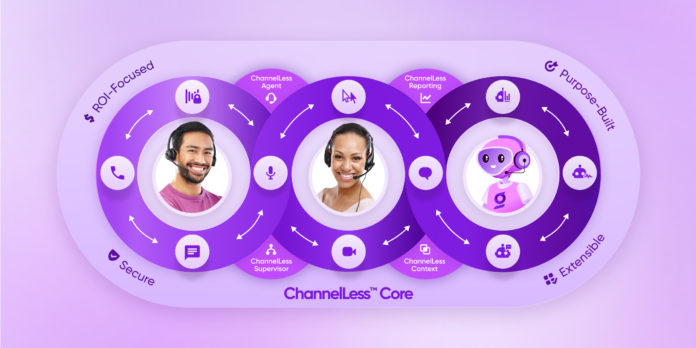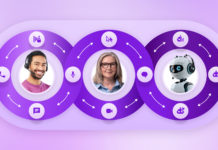If you’ve been at your present organization for more than 5 or 10 years (let alone those of you who’ve been around for many decades!), think about how different your operation is compared to when you started.
Most of those changes were the result of strategic decisions based on changes in the competitive and customer landscape. Your organization has an obligation to do everything in your power to keep up with the pace of change, right?
With that in mind, isn’t it time to re-think your strategy for how you manage the people who interact with your customers every day? Not just the people in your branches, but the people who handle the majority of interactions with your customers–the ones that happen through voice and messaging.
The Efficiency of a Unified Interaction Team
Most organizations have always run a call center, but as the world became more digital, other teams were added–people who responded to emails, a group of chat agents, other people operating as part of a “digital” team. As more channels were added to the mix, new people needed to be brought on board to run those channels.
But now it’s time to consider evolving to a staffing and operational model that unifies and takes control over ALL of the interactions you’re having with customers. As organizations begin to adopt the concept of Unified Interaction Management (UIM), it becomes clear that one obvious way to start unifying things is how you staff the team(s) that are responsible for interactions.
But what if “team” was no longer plural? What if there was just one team–an Interaction Team? In a ChannelLess™ environment, all customer interactions–regardless of channel–are managed by one unified team.
Yes, there are different jobs within that team, but not separate teams.
- Some people are working in a Messaging environment. They are interacting with customers through chat sessions and texting (SMS).
- Others are working in a Voice environment. They are communicating through OnScreen Voice (or video) or by dialed-in phone calls.
- A third group is focused on improving the efficiency of automated interactions, using Virtual Assistants to handle specific issues and needs.
But they’re all part of one Interaction Team, and every customer is served by this unified team. It doesn’t matter which “channel” a person chooses to contact you, each customer is managed by one team–even when it is necessary to create transitions in communication and collaboration modes within the span of a single interaction.
Ironically, the continued use of a separate call center model (or even the more evolved contact center model) is inadvertently impeding your company’s progress. A “call center” model costs more, and creates a sub-optimal experience–both for customers as well as your people.
There is mounting evidence that moving to an Interaction Team model produces positive results in a number of measurable categories:
- Reduced unnecessary phone volume
- Shorter handle time/interaction
- Improved NPS/CSAT
- Lower customer effort
- Greater employee engagement/empowerment
Final Thought: If evolving your frontline (non-branch) operation into an Interaction Team model was very hard to do then deciding whether to move in that direction would be a tough call. But based on the experiences of those organizations that are already well along their way, the transition has been surprisingly easy.
UIM is a truly customer-centric way of interacting, but it is also the optimal company-centric strategy, since it produces the exact results that every leader is being held accountable for. That’s something worth thinking about.





